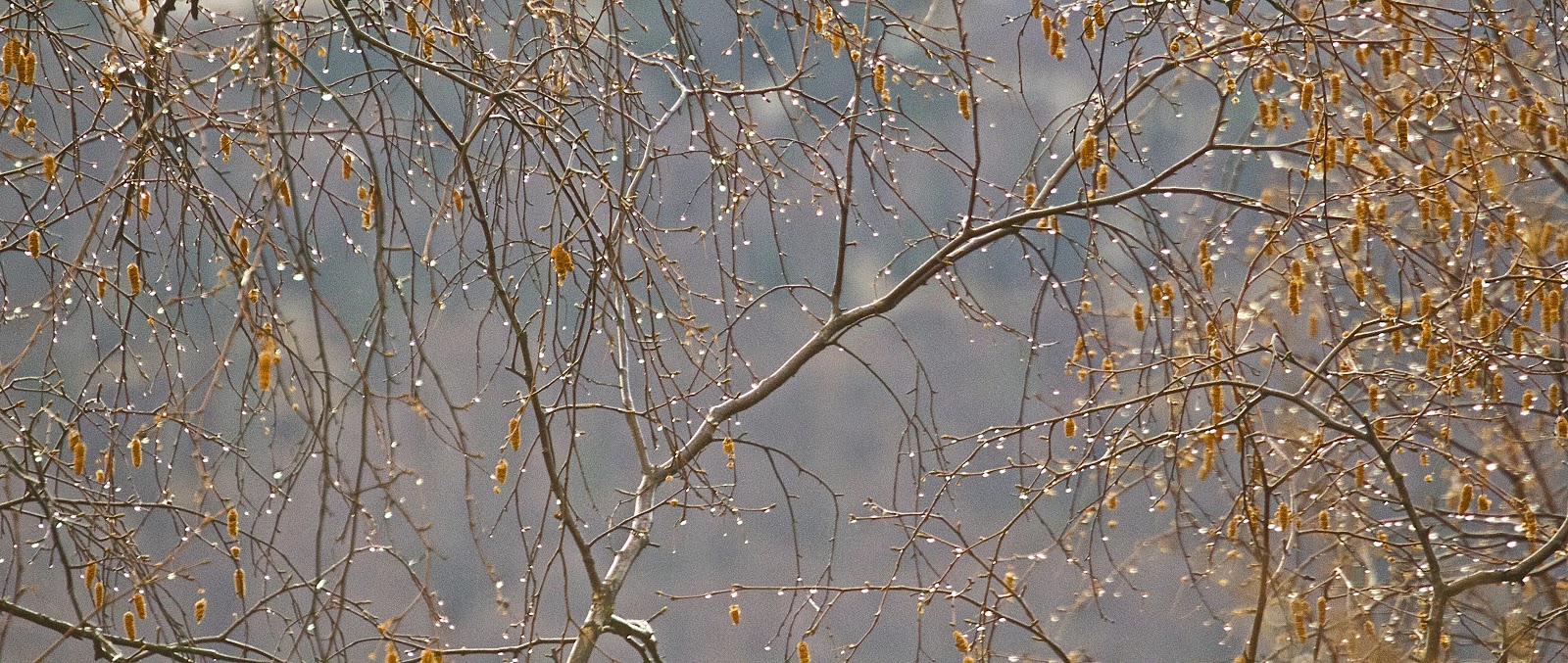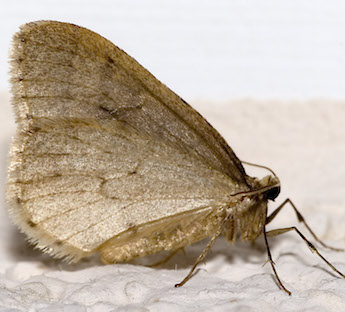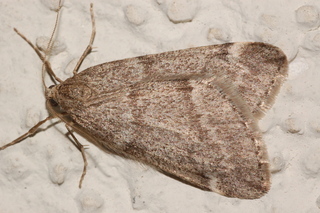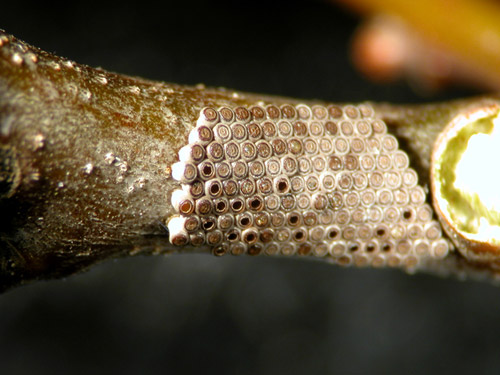
Are you seeing moths attracted to your lights? Beware the Winter Moth is coming.
What is the Winter Moth?

The Winter Moth was introduced to the east coast from Europe through Nova Scotia. The hardest hit local areas include coastal Massachusetts, but this pest has spread south into Connecticut and north into Maine.
The Winter Moth caterpillar has been defoliating deciduous plant material at an alarming rate. Trees at risk are maples, oaks, cherries, basswood, ash, white elm, crabapple, apple, and blueberry, and they can also drop from your trees into your plant beds to feed on your perennials.
 Male winter moths have wings and are rather drab-colored moths. The hind edge of their wings is fringed with small hairs and the bottom row of dark banding near the tip of the wing appears as a series of hash marks. This becomes important when trying to separate them from male fall cankerworm moths, which are active at the same time. The male Fall Cankerworm is similar to winter moth males but has a distinctive light colored patch near the distal end of the front wing on the leading edge.
Male winter moths have wings and are rather drab-colored moths. The hind edge of their wings is fringed with small hairs and the bottom row of dark banding near the tip of the wing appears as a series of hash marks. This becomes important when trying to separate them from male fall cankerworm moths, which are active at the same time. The male Fall Cankerworm is similar to winter moth males but has a distinctive light colored patch near the distal end of the front wing on the leading edge.
Adult female winter moths are said to be wingless but they actually have greatly reduced wings and are smaller than the totally wingless adult female Fall Cankerworm moths.

Males and female moths of both species emerge around Thanksgiving, and may continue to emerge well through December; whenever milder temperatures prevail during that time period. The moths of both species are attracted to lights. Females of both species will orient on a vertical silhouette, such as a tree trunk, and race up it while emitting a sex pheromone to attract males of her species. Clouds of male winter moths can be seen flying around tree trunks, resting on the bark and mating with females at this time.
Once mated, the female may continue to scurry up the tree and begin to lay eggs. Both males and females die soon after mating and egg deposition. Each female winter moth will lay up to 150 eggs. Fall Cankerworm females lay their eggs around the small stems of host plants. These egg clusters look like tiny individual barrels that are tightly packed together. There are no control options for the adult stages of these moths.
So, What is the Plan of Attack?
.jpg)
| Life Phase | Season | Control Options |
|
CONTROL: Egg |
Late Fall / Winter |
A dormant oil spray can be applied to suffocate the eggs. |
|
CONTROL: Newly hatched caterpillars |
Late March / Early April |
Bacillus thuringiensis or BT is a very safe and effective way to control all caterpillars. |
|
CONTROL: Feeding caterpillars |
Late May / Early June |
BT can still be applied only if not applied earlier. Spinosad, Sevin and Neem are also effective. Spinosad is derived from a naturally occurring soil dwelling bacterium that was collected from an abandoned rum distillery on a Caribbean island in 1982. This unique bacterium was defined as a new species when it was discovered and it has never been found in nature anywhere else in the world. Since being discovered, Spinosad has become a leading pesticide used by agriculture world wide in the production of organic produce. |
|
NO CONTROL: Winter Moth Pupae and Adult Winter Months |
Pupate immediately after feeding, moths emerge around Thanksgiving |
At this stage, the moths are no threat to plant life and there are no control options available. |
As with all pest control measures, we recommend asking the experts at the Garden Center to avoid damage to your plants or to the environment.

